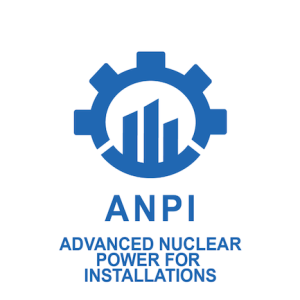
In the industrial zone of the city of Sosnovy Bor (Leningrad Region), the manufacture of elements of one of the passive safety systems for unit 7 of the Leningrad NPP (also known as Leningrad-II unit 3) has begun. The internal protective shell (VZO – Vnutrennei Zatsitnoi Obolochk) – the localising security system – designed to prevent the release of radioactive substances outside the reactor building in all operating conditions.
Currently Leningrad NPP has four units in operation – units 3&4 with Soviet RBMK-1000 reactors, as well units 5&6 with new VVER-1200 units (also known as Leningrad-II 1&2). Units 5&6 replaced units 1&2 with RBMK-1000 reactors, which were decommissioned in 2018 and 2020. New VVER-1200 units (7&8) will replace units 3&4. First concrete for unit 7 also took place ahead of schedule.
Currently, specialists of the Northern Construction Directorate (SUS – Severnoi Upravlenie Stroitelstva) holding TITAN-2 have launched the production of its sealing lining. In total, they will have to produce 24 three-dimensional spatial metal structures with a total weight of 156 tonnes in order to assemble the lower tier of the VZO.
Production of structures has been streamlined and is carried out around the clock. The full production cycle of each shipping stamp includes several technological stages: laying out and assembling steel cladding sheets on a slipway, welding sealing cladding sheets together, marking future elements, installing and welding rigid frames and supporting frames, applying an aluminium metallisation layer to the cladding sheets from the side of the future reactor, painting and drying the product.
“We involve only highly qualified, certified specialists in the assembly and welding of metal structures, many of whom, while working at our company, participated in the manufacture of similar structures for nuclear power plants being built today with the support of Rosatom abroad,” said Mikhail Sidorov, Director of the VZO SUS Directorate. “We control all operations from start to finish. We pay special attention to welded joints. The welding quality is checked by visual measuring and ultrasonic inspection methods, and the tightness of the welded joints is also checked. To confirm the correctness of the assembly of the elements and to exclude deviations from the design dimensions, we carry out multiple executive geodetic surveys.”
According to the schedule, the manufacture of elements for the lower tier of the inner containment should be completed at the beginning of the third quarter of this year. Meanwhile, at the construction site of the of the new unit, preparations begin for the integrated assembly of the VZO made by SUS specialists.
According to Evgeny Milushkin, Deputy Director for Capital Construction and Head of the Leningrad-II Capital Construction Department, the construction of the inner containment of the reactor building for unit 7 will be carried out using industrial methods. They proved themselves well during the construction of power units 5&6 and are now being successfully replicated at other Russian and foreign nuclear construction sites.
“In the near future, a special slipway will be installed next to the nuclear island, on which all the elements of the inner containment will be assembled and supplemented with hermetic passages, elements of safety systems, ventilation, service areas, etc. The large–scale assembly on the slipway will ensure high quality of the assembled structures, reduce labour costs and shorten the construction time of the power unit,” he stressed.
The first tier of the inner containment is planned to be installed in the autumn. To perform these works, installers will need a unique rigging traverse. It will be made at the same factory as the shipping stamps. The device is designed specifically for the size of the future containment. The multi-vector traverse includes 18 slings that will evenly distribute the load and smoothly move cylindrical tiers with a height of about 10 metres and a diameter of 44 metres. The containment will be installed using a heavy crawler crane.
The VZO has a thickness of 1200 mm and consists of steel cladding and heavily reinforced concrete. In addition to the internal containment, NPPs with VVER-1200 reactors also have an external containment to protect the reactor unit from external impacts such as shock waves, hurricanes, explosions, etc.






